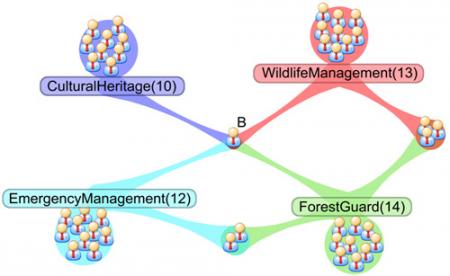Supporting Geo-Semantic Web Communities with the DBin Platform: Use Cases and Perspectives
Giovanni Tummarello • Christian Morbidoni • Michele Nucci •
Ernesto Marcheggiani
The aim of this chapter is to show how the need for advanced cooperative annotation and information exchange can be addressed using a paradigm called “Interconnected Geo-Semantic Web Communities”. The use cases and its associated needs are highlighted, and then the base tool for this work, the DBin Semantic Web information manager, is focused on. DBin enables users to create and experience the Semantic Web by exchanging RDF knowledge in peer-to-peer (P2P) “topic” channels. Once sufficient information has been collected locally, rich and fast browsing of semantically structured knowledge becomes possible, even offline, without generating external traffic or computational load. DBin has a number of modules to support cooperative tagging and annotations of geographical objects. Different communities of users, e.g., concerned with different kinds of geographic objects, can each exploit DBin to cooperate in enriched geo-semantic spaces. Advanced users, e.g., cultural heritage agencies, can join multiple groups at the same time and use collective cross-domain knowledge.


The Geospatial Web ▪ Copyright 2007 Springer ▪ ISBN: 1-84628-826-6


